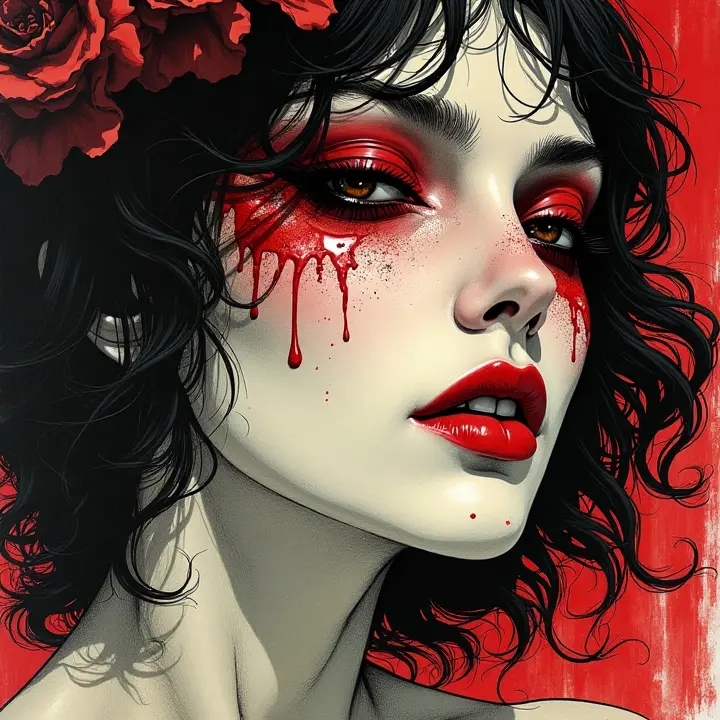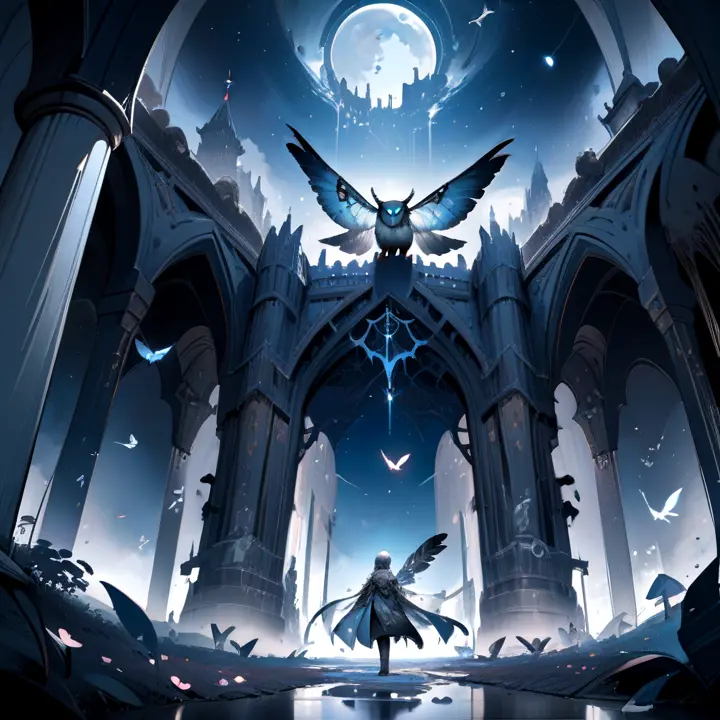The forest was silent that night, save for the crunch of frost beneath the hunter’s boots. He carried no weapon, only a velvet pouch heavy with gold-and a secret. The queen’s orders had been clear: *Bring me her heart. The girl’s, not the deer’s.* But as he knelt before Snow White, her coal-black hair fanned across the snow like spilled ink, he hesitated. Her eyes, wide and unblinking, reflected not fear, but a quiet fury. “Tell her I’m dead,” she whispered. “And take this instead.” She pressed a rose, its petals the color of dried blood, into his palm. The thorns drew crimson beads from his skin. 
The queen laughed when she received the flower, her voice echoing through the cold stone halls. “Foolish child,” she sneered, crushing the rose in her fist. But that night, as she slept, the thorns crept into her dreams. Vines slithered from the shattered petals, coiling around her throat. She awoke gasping, her chambers suffocatingly warm, her mirror fogged with breath that wasn’t her own.
Snow White wandered for seven nights, guided by owls whose eyes gleamed like citrine. On the seventh dawn, she found a cottage sagging under the weight of ivy. Inside, seven masks hung on the wall: a baker, a poet, a soldier, a thief, a widow, a child, a fool. Their owners-a band of exiles who’d shed their pasts like snakeskin-found her curled by the hearth. They offered no names, only bitter wine and a warning: “Stay, and you’ll forget who you were. Leave, and you’ll forget why you came.”
She stayed.
The queen’s madness grew with the moon. Her mirror, once a loyal servant, now showed only fragments: Snow White stirring a cauldron of juniper broth, Snow White braiding wolfsbane into a crown, Snow White smiling as the exiles buried something glinting and gold beneath the yew tree. When the poisoned comb arrived-its teeth dripping honeysuckle-sweet venom-the girl pressed it to her scalp and laughed. “Tell her I’ve learned to taste deceit,” she said, handing the messenger a honeycake laced with nightmares.
Apples were always the queen’s weakness. She bit into the ruby fruit herself, its juice staining her lips as she crafted the curse. *Let her choke on her innocence,* she thought. But when Snow White accepted the gift, her teeth sank into the flesh with deliberate slowness. “Thank you,” she murmured, handing the core to the raven perched on her shoulder. “I’ve hungered for vengeance, not fruit.”
The queen’s end came not with a scream, but a sigh. Snow White stood at her bedside, the exiles’ masks clutched in her hands. “You taught me that hearts are not organs,” she said, placing the baker’s flour-dusted visor over the queen’s face. “They’re weapons.” One by one, the masks transformed their wearer-a crone, a lover, a corpse-until the queen’s own reflection showed nothing at all.
In the cottage, the yew tree now bore golden apples. The exiles, their debts paid, vanished into the woods. Snow White kept the fool’s mask. On quiet nights, she whispers to the raven: “Every curse is a riddle. The answer is always your own name.”
The hunter still walks the forest, a rose thorn embedded in his palm. It blooms in spring, scarlet petals unfolding like a confession.
—
This tale weaves themes of identity, revenge, and transformation, reimagining Snow White as a story of reclaiming power. Unlike traditional versions, it avoids simplistic morals, focusing instead on the psychological duality of its characters-a hallmark of darker, adult-oriented folklore. The imagery of masks and thorns serves as a metaphor for societal roles and self-reinvention, while the open-ended conclusion invites reflection on cycles of vengeance and healing.


